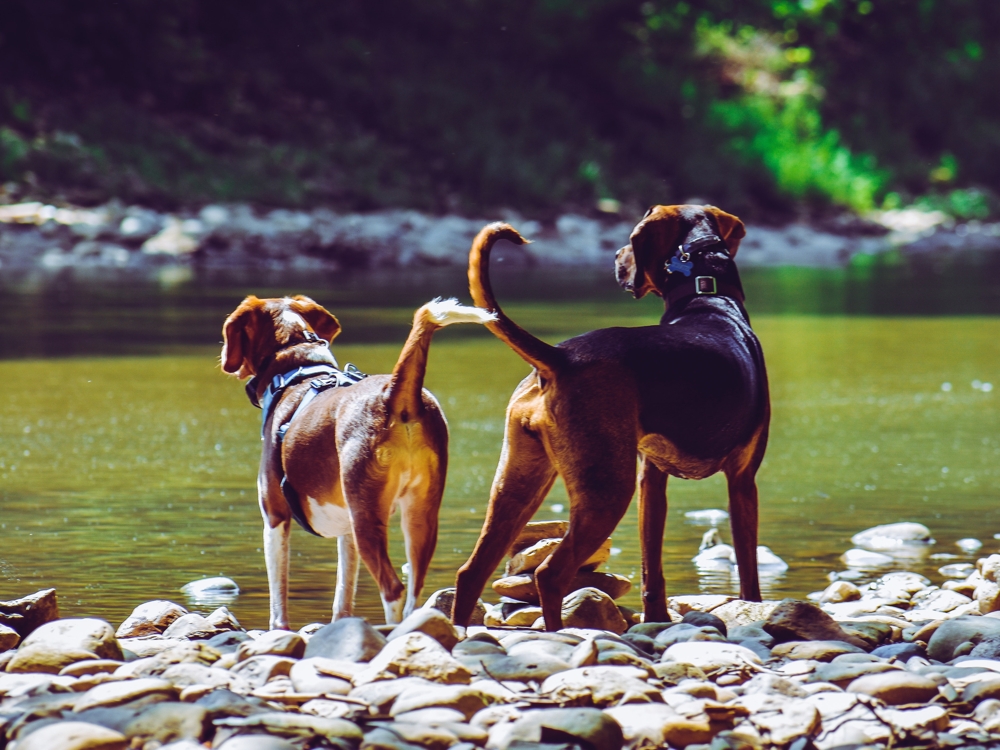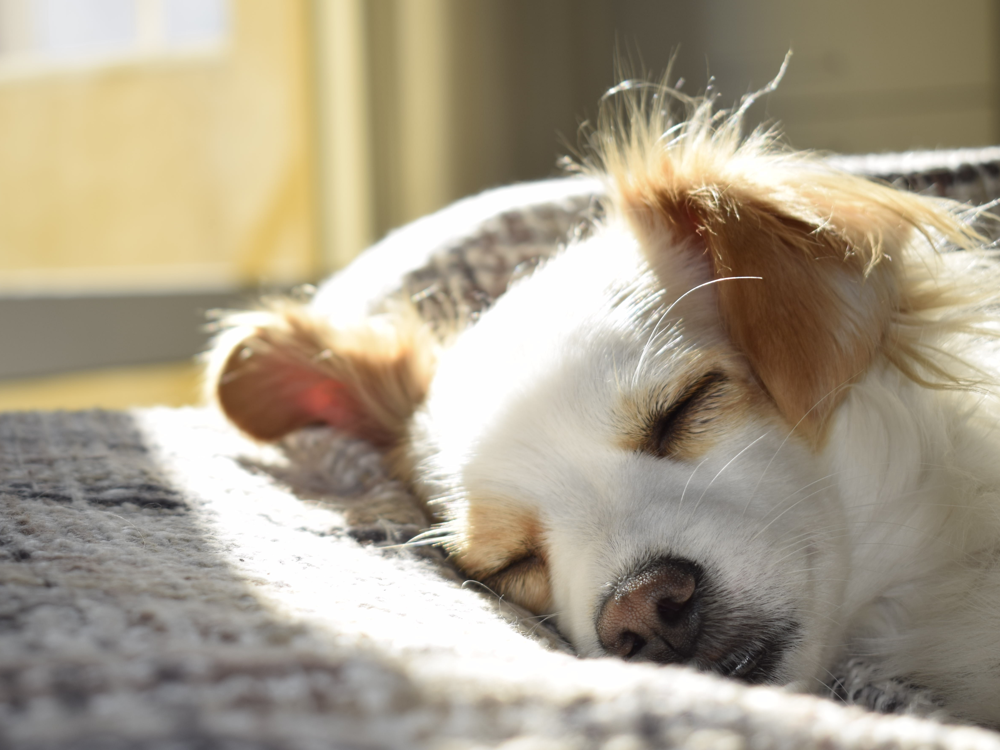Tips to Keep Dogs Cool This Summer
Share
[Sassy_Social_Share]Ireland is having a fantastic summer so far, with one gorgeous day after another. But this fine weather can be too much of a good thing for dogs. When the temperature goes up, so does your dog’s risk of heat stroke.

Stub-nosed breeds such as boxers, pugs, bull breeds and shih tzus are especially vulnerable. The structure of their nose makes it more difficult for them to breath, which means heat and flying are more dangerous for them than for other dogs. Our canine friends have a much lower tolerance for heat than we humans do, so they can get in trouble in temperatures that don’t seem as extreme to us.
First off, dog owners should know the signs of heat stroke and what to do if your dog becomes ill. Watch for the following signs that your dog is in trouble, and contact your vet urgently if your dog appears to have heat stroke.
- Excessive panting. Dogs don’t really sweat. Instead, they pant. All dogs will pant a bit in hot weather, but if you notice your dog is panting heavily for prolonged periods, pay close attention.
- If your dog appears distressed, anxious or very restless, this could be a sign of heat stroke.
- Heavy drooling. You know how much drooling is normal for your dog. If he’s drooling noticeably more than usual, he could be in trouble.
- Weakness, dizziness. If your pet has any difficulty moving around or standing, call your vet. This is serious.
- Rapid heartbeat. If your dog’s heart is thumping fast enough for you to suspect it is too fast, it probably is. Take action immediately.
- Dark or red gums. Your dog’s gums are normally pink. If they appear darker, it indicates heat stroke.
If you suspect your dog has heat stroke, contact your vet immediately. This is an emergency. If you have to bring him to the vet and your car does not have air conditioning, soak a towel in cold water, wring it out and let him lie on it. You can put another towel under it to protect your car. You want to cool him down quickly but not so abruptly it puts him in shock.
If your dog is bothered by the heat but does not appear to have heat stroke, you can help him cool down quickly by wiping his paws with a damp, cool cloth or getting him wet. Let him come into the bathroom or kitchen if there is a tile floor as lying there will cool him down too.
Avoiding Heat-Related Dangers
Dogs love their daily walks, and they thrive on a predictable routine. But when the weather heats up, you have to shake this up. Too much exertion in the heat is dangerous for your dog. To protect him, take him for walks in the morning or at night when it is cooler. And keep your walks shorter. Bring water along for him if you are going for more than half an hour or if he is elderly or stub-nosed. Choose walking routes where your dog can stroll on grass instead of pavement and avoid asphalt. Paved surfaces, especially asphalt, can burn your dog’s paws on a hot day. If your dog is reluctant to walk, listen to him. The pavement might be too hot, or he might be struggling with the heat. It’s okay to skip walks during hot weather if they are too much for your dog.
The idea of playing fetch on glorious summer day is pure fun. But what about the reality? Some dogs get so caught up in the game, that they won’t let you know they need to stop. In hot weather, confine play time to mornings, evenings and shady areas.
We all know not to leave a dog in a parked car on a warm day. But some people think it is okay if it is only for a few minutes or if they leave a window cracked open or provide water. Wrong. It simply is not safe. You can be delayed by something beyond your control and leaving the window open is not adequate. Temperatures soar quickly in a car, even with the windows open, and dogs have a lower tolerance for heat than we do. If your car is uncomfortable for you, it is dangerous for your dog. Dogs die in hot cars.
If you are taking your dog on a car trip, it is important that he is comfortable, safe and unable to interfere with the driving. Ideally, small dogs can go in carriers while larger dogs can be restrained with a dog seat belt. Both of these measures ensure that your dog is protected from being knocked around the car in the event of an accident or sudden stop. Many people argue that the car boot is their preferred place for their dog, but it poses some concerns. In the summer, ventilation is an issue. The boot isn’t air conditioned. You have no way to know if your pet becomes distressed or ill in the boot of a saloon car. In an accident or sudden stop, if your dog is loose in the boot, he can be hurt by the impact. And when you open the boot, your dog can be so excited he can leap out and possibly run off into traffic.
How to Keep Your Dog Comfortable in Hot Weather
Hot weather is not all gloom and doom for dogs! You can enjoy the summer together. If you live near a safe, clean lake or stream, you can take your dog for swim instead of a walk. Most – but not all – dogs are instinctive swimmers. Start off in very shallow water to see how your dog does. Putting a child’s wading pool in the garden gives your dog a fun way to cool down, and it’s sure to give you a few laughs too.
Your dog needs cool, shady places to snooze during the hot afternoons. If he is outside, make sure he has plenty of shade. Dog houses are designed to keep dogs warm in winter. They don’t have great ventilation, and they are shelter from the sun. If your garden has no real shade midday, you can find dog beds that have a gazebo type covering to shade your best friend.
Staying hydrated is important for all of us in warm weather. Check your dog’s water bowl more often than usual, and keep it in a shaded place. If you are going to be away for hours, leave out extra bowls of water. You can even freeze shallow plastic dishes of water and leave them out for your dog to lick. If you really want to give your dog a treat, freeze a dish of beef or chicken broth for him to lick. It is a myth that ice is dangerous for dogs. The American Kennel Club has gone on record saying it does not cause bloat. Gulping air is what causes bloat, and keeping your dog well hydrated will help avoid a situation where he is so hot and thirsty that he drinks too quickly and gulps air.





